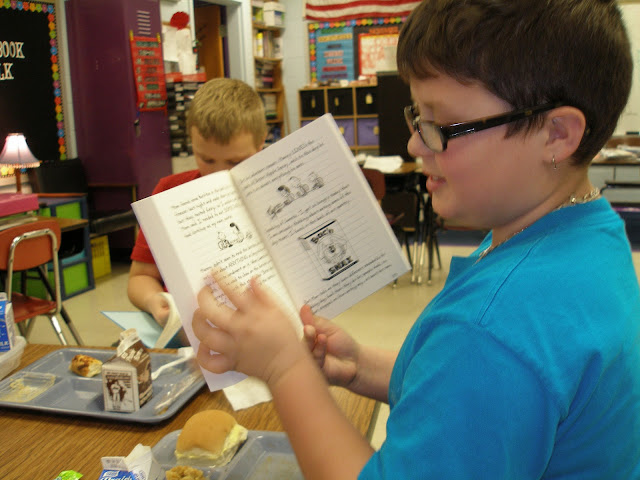We recently had a Title I, RtI, and 31A audit. This visit required an extensive survey and an intense team interview. Although the audit is one of those hoop we must jump through to get the money needed for our at risk students, I looked at as a way to see what we do well and what we can do better. I was involved as building improvement co-chair and a district team member. During the interview we were asked "What do you do to motivate reluctant readers?"
I've been thinking about this a personal note. Typically, reluctant readers are boys that haven't been successful in reading, or find it difficult to find a book that interests them. I thought about some of the children that have been "hesitant" readers in the past. Many of them had identified learning disabilities. Others were unsuccessful in reading because they didn't have books at home, or weren't read to as early learners. But, another group, liked reading non-fiction books and devoured any curriculum support book I had, but struggled to read a novel. Still others struggle to find books of interest. What had I done to foster a love of reading for each of them?
Over the years, I have been purchasing books for my classroom. (see other post on my library). I have 1,800+ books of my own, and access to classroom sets of over two dozen novels. I have a diverse collection including numerous popular author, most children literature genres, and books from picture books to early readers to high school levels. Most students can find a novel, but if they appear to struggle I can give them a title to fit most areas. I 've add more non-fiction science and social studies books with a grant from our Foundation for Excellence in Education awarded me a mini-grant. This includes books about the Revolutionary War, Civil War, both World Wars, and numerous other history or science topics. A former teacher was gave me an extensive science support library. These book have appealed to the non-fiction fans. Having a wide range of levels makes it easy to find a book for most readers. I also use Accelerated Reading to motivate, book contracts and reading response journals to ensure students read. I talk about books I am reading myself (usually Children's Literature) and buy the "hottest" selling books from the book clubs to share with students. I encourage students to "sell" the latest read book, do videos of book talks, and host lunch discussions of literature circle novels. Having an occasional all day reading days with blankets, pillows, slippers and stuffed animals also goes over well. The most important thing I have learned is that to motivate most fifth grade reluctant readers, I need to stock multiple copies of "Diary of Wimpy Kids" and "Captain Underpants" books. These series have helped me get even my most hesitant readers to read. They love to discuss them in our "Lunch Bunch" literature circles. Give some of these ideas a try.
--Marcia
 |
| Discussing Cabin Fever after reading it in 5 hours! |

